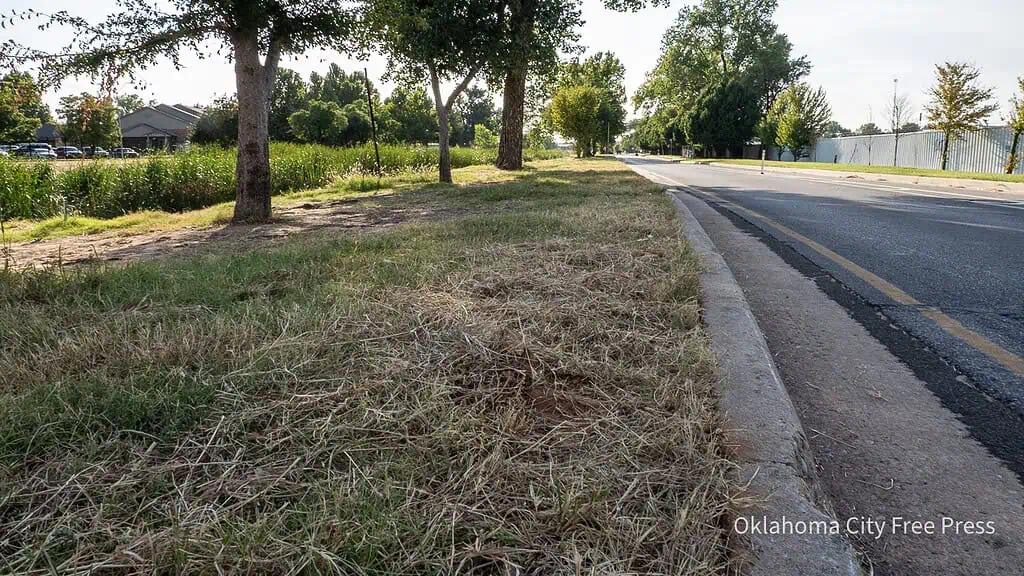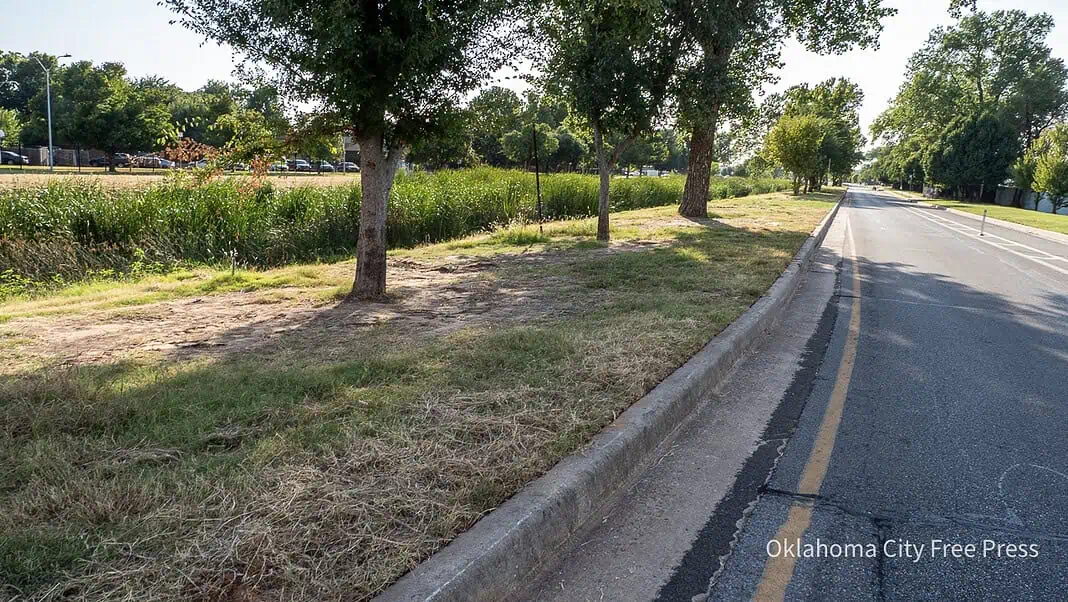OKLAHOMA CITY — Forty-five individuals who had been living in an encampment along General Pershing Boulevard in west Oklahoma City have been moved into permanent housing, city officials announced. Each person will also receive 12 months of case management support, designed to help them stabilize and thrive in their new homes.
The effort, part of the Key to Home Partnership’s Encampment Rehousing Initiative, followed weeks of outreach to every encampment resident. “The response was grounded in compassion, strong coordination among service partners, and a commitment to long‑term solutions rather than short‑term fixes,” said Jamie Caves, Homeless Strategy Implementation Manager for the partnership.
Unusual campsite
The site had been located in a stormwater drainage area intended to manage runoff—never suitable for human habitation. City leaders noted that the presence of growing numbers of people in the drainage posed serious health and safety risks, both to residents and motorists, due to potential flooding and traffic hazards.
The east-west stretch between Pennsylvania Avenue and May Avenue, over time, had become a long tent encampment of homeless persons at the inside edges of General Pershing Boulevard going both directions. The lanes are separated by a deep flood control ditch.
When Free Press visited the site Monday, the city had cleaned up the area and mowed down both banks to the waterway, grown up with cattails. But the worn paths and tent burn marks left in the grass remained at least for now.

The presence of tall cattails at the bottom of the drainage ditch may have been a part of the attractiveness of the site, giving residents at the road’s edge a place to relieve themselves hidden from the roadway in an area with no available restrooms.
Monday, the unmistakable smell of human feces still lingered in the air, a telltale of the possible use of the privacy of the tall cattails over past months as the camp grew increasingly larger.
But now the solution is underway.
“We know that clearing encampments without a housing solution doesn’t solve homelessness,” Caves said about their housing-first concept. “We’re focused on what does—housing, case management, and long‑term, sustainable solutions.”
Since launching in April 2023, the Encampment Rehousing Initiative has helped nearly 450 people transition from unsheltered homelessness into housing with supportive services.
Homelessness in Oklahoma City
According to the 2025 Point‑in‑Time Count—the city’s annual one-night survey conducted in January—the total number of people experiencing homelessness stood at 1,882, a 2.4 percent increase from the 1,838 counted in 2024. That marked a significant slowdown from the sharp 28 percent rise reported between 2023 and 2024.
The 2025 count also revealed a 33 percent drop in chronic, unsheltered homelessness compared with 2024—a decline of 43 percent since 2023. City officials credited that progress to targeted housing programs and improved coordination under the Key to Home framework.
Even so, city leaders cautioned that homelessness remains a persistent challenge. “Despite significant deceleration in homelessness, we continue to have more people entering homelessness than exiting to housing each year,” noted one report.
Past encampment rehousing efforts
This is not the first time the Key to Home Partnership has conducted such efforts. In early 2025, city officials announced that the initiative had housed 333 people from encampments—more than 20 camps—across Oklahoma City. One such camp was located beneath a bridge along the Classen Boulevard corridor, where 35 people were offered housing after four to six weeks of outreach.
The strategy is data-driven and time-sensitive: partners aim to engage with encampment residents and offer housing within 4–6 weeks of identifying their locations. Officials say that the longer someone remains unsheltered, the more difficult it becomes for them to access housing.
How to help
Residents can support Key to Home’s work by donating to the Communities Foundation of Oklahoma at www.cfok.org/keytohome. Donations are tax-deductible and go toward reducing barriers that prevent individuals from accessing housing.
A broader strategic push
The Encampment Rehousing Initiative is one pillar in a broader strategy to reduce homelessness in Oklahoma City. Earlier this month, Key to Home launched Diversion and Rapid Exit programs, designed to prevent at‑risk individuals from entering the homeless response system in the first place.
Key to Home Partnership comprises more than 50 agencies, service providers, funders and government partners. The coalition shares data, aligns resources, and invests in proven strategies in hopes of making homelessness “rare, brief and non‑recurring” in Oklahoma City.
Brett is the founder, and editor in chief of Oklahoma City Free Press. He continues to contribute reporting and photography to the efforts of the publication as well as leadership in developing support.









